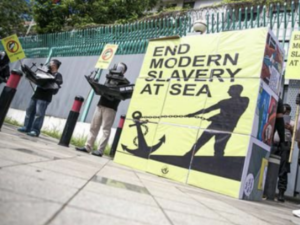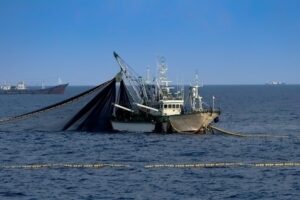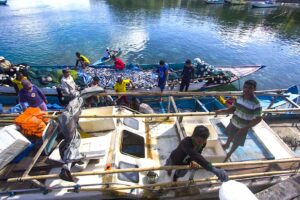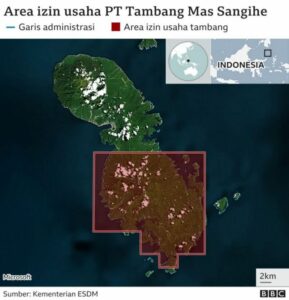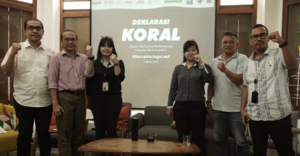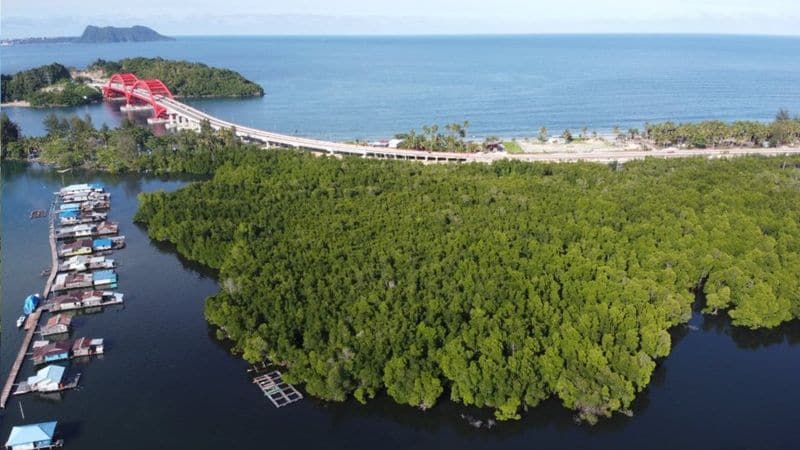
A mangrove forest is a group of plants consisting of various types of plants from different families, but have the same morphological and physiological adaptability to habitats influenced by tides. Tides cause fluctuations in several large environmental factors, especially temperature and salinity. Therefore, the types of plants and animals that have a great tolerance to extreme changes in these factors can survive and thrive. This causes the diversity of mangrove species to be small, but the population density of each one is generally large, like what we see in the Youtefa Bay area of Jayapura City.
Research from FMIPA UNCEN by Hendrikus Randongkir, Henderite L. Ohe, and John D. Kalor in 2015 revealed the potential for fisheries in the mangrove area of the Youtefa Bay KWA in Papua which includes four types of fish, three types of crabs, and five types of shellfish. Not only is it home to natural ecosystems, but Youtefa Bay also holds the traditional wealth of the indigenous residents of Enggros Village.
Enggros Village, located in Abepura District, Jayapura, is one of the villages where dense mangrove forests grow. The indigenous population here, especially its women, has a close relationship to the mangrove forest, so much so that they consider this forest sacred. The mangrove forest is central to their daily lives and is home to their Tonotwiyat tradition and customs of upholding kinship between residents. As a community, they also maintain and respect the mangrove forest as their main source of livelihood.
However, marine coastal areas such as this are increasingly being threatened by human activities. Massive developments taking place in Papua, such as the construction of the Holtekamp bridge and rowing track for the National Sports Week (PON) are some of the causes of the erosion and contamination of the mangrove forest area in this village. A lot of waste is carried away due to development and tourist areas in the cities or surrounding areas. For example, plastic waste buried in the mud threatens the habitat of fish, shrimps, crabs, and bia, a type of shellfish that is usually caught and processed by residents of Enggros Village.
Threats do not only come from surrounding areas, but also from the center. The ratification of Indonesia’s Omnibus Law on Job Creation Law in October 2020, which many people believe was finalized in a hurry with minimal public participation, especially from indigenous peoples, opens the door to several risks of endangering coastal areas including land or mangrove forests. There are several articles in the law that should be evaluated further or even removed completely from the law:
First, the centralization of authority to the central government can reduce the control of exploitation of marine and fishery resources and weaken the essence of regional autonomy. This can also potentially expose Indonesia’s fisheries to further over-exploitation.
Second, the simplification of licensing regulated by the Omnibus Law can encourage massive business expansion in coastal areas and marine spaces without considering the carrying capacity of the ecosystem. To date, the government has established 15 Special Economic Zones (SEZs) to support investment. When combined with the Omnibus Law, damage to coastal ecosystems (mangroves, seagrass beds, and coral reefs) becomes an increasingly real threat to fishing communities.
Third, the change in the licensing system to a risk-based approach is not supported by clear and credible institutional and methodological regulations. Currently, Indonesia lacks an institution that can be considered ready and experienced to carry out a holistic risk assessment. In addition, the database in Indonesia has not been able to support the effectiveness of the risk-based approach, so risk determination is feared to be subjective. As a result, business activities that are not considered high risk are not required to have a permit. If the risk determination is not accurate, it will endanger the sustainability of marine and fishery resources in Indonesia.
Fourth, the Omnibus Law minimizes community participation in determining coastal utilization policies. Community involvement in the AMDAL drafting stage was limited and the multi-stakeholder AMDAL Assessment Commission was abolished. The implication is that the utilization of coastal areas has the potential to override the consideration of the fate of the people who depend on the preservation of coastal ecosystems.
Reflecting on the story of the residents of Enggros Village in Papua who uphold the coastal areas and mangrove forests, the government should think twice about implementing the Omnibus Law and actively look for gaps in the Omnibus Law that can harm the livelihoods of indigenous communities. The existence of coastal areas and indigenous communities have become one and the same — and it has been that way long before Indonesia’s independence. It would be very wise if the government were more in favor of those who have served as the building blocks of Indonesia. After all, indigenous communities have always cared for and preserved our environment and cultural traditions. Rather than focusing solely on increasing profits and investments, the government should pay more attention to the cries of the hearts of indigenous communities and those living in coastal areas.
******
